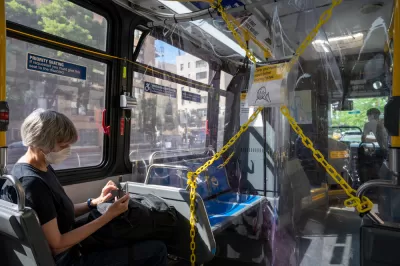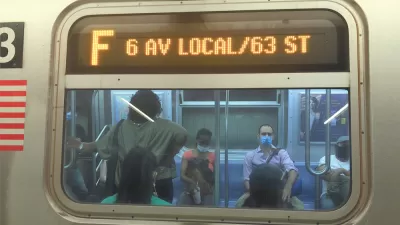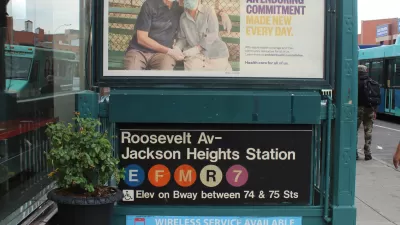Buses in New York City are proving to be a crucial tool as New York recovers from a brutal experience at the beginning of the pandemic.

For the first time since New York City started keeping track more than half a century ago, buses carried more daily riders than the subway in April and May of this year, according to an article by Christina Goldbaum and Winnie Hu—444,000 on the subway and 505,000 on the buses.
"Buses have held on to their lead even as the city has begun reopening after a three-month shutdown and more commuters return to work. Average daily counts in June were 752,000 riders for the subway — and 830,000 riders for the buses," according to the article.
"Buses are being counted on to keep people out of cars and to relieve subway crowding as more commuters come back, drawing many riders who said they felt buses were a safer and less-stressful alternative because riders can wait outside for the bus, see how clean or crowded a bus is before paying the fare, and hop off at any time and be back outside again," according to Goldbaum and Hu.
The usefulness and popularity of buses in this troubled economic and public health climate could help explain Mayor Bill de Blasio's June decision to prioritize buses on 20 miles of streets around the city. But just because Mayor de Blasio and more than 800,000 daily riders are convinced, doesn't mean everyone is convinced. The article includes soundbites from stakeholders in Queens who are angered by the bus's encroachment on public space previously reserved for the automobile.
FULL STORY: Why New York Buses Are on the Rise in a Subway City

Planetizen Federal Action Tracker
A weekly monitor of how Trump’s orders and actions are impacting planners and planning in America.

Maui's Vacation Rental Debate Turns Ugly
Verbal attacks, misinformation campaigns and fistfights plague a high-stakes debate to convert thousands of vacation rentals into long-term housing.

San Francisco Suspends Traffic Calming Amidst Record Deaths
Citing “a challenging fiscal landscape,” the city will cease the program on the heels of 42 traffic deaths, including 24 pedestrians.

Amtrak Rolls Out New Orleans to Alabama “Mardi Gras” Train
The new service will operate morning and evening departures between Mobile and New Orleans.

The Subversive Car-Free Guide to Trump's Great American Road Trip
Car-free ways to access Chicagoland’s best tourist attractions.

San Antonio and Austin are Fusing Into one Massive Megaregion
The region spanning the two central Texas cities is growing fast, posing challenges for local infrastructure and water supplies.
Urban Design for Planners 1: Software Tools
This six-course series explores essential urban design concepts using open source software and equips planners with the tools they need to participate fully in the urban design process.
Planning for Universal Design
Learn the tools for implementing Universal Design in planning regulations.
Heyer Gruel & Associates PA
JM Goldson LLC
Custer County Colorado
City of Camden Redevelopment Agency
City of Astoria
Transportation Research & Education Center (TREC) at Portland State University
Jefferson Parish Government
Camden Redevelopment Agency
City of Claremont





























